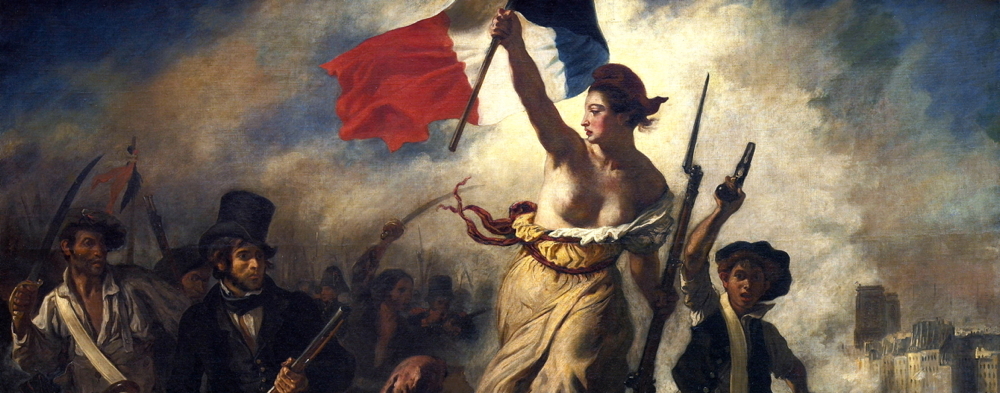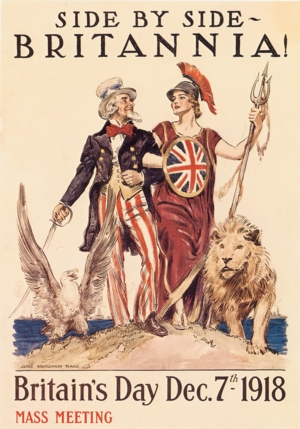
Images of Liberty and Power
[Created November 12, 2010]
[Updated June 12, 2011]
[Updated June 12, 2011]
 |
 |
Poster for World Peace Congress, Paris 1949
(image of dove by Picasso) |
James Montgomery Flagg, "Side-by-Side
- Britannia" (1918) |
| Observations on animal symbolism in war and peace: The dove of peace has become one of the iconic images of the post-war peace movement thanks largely to Picasso. In this 1949 poster he shows a life-like dove with feathery feet. By 1962 he had developed the more stylised outline of a dove carrying a sprig of leaves in its beak which subsequently became better known. I have had a blue and white flag with this latter dove of peace image flying at the back of my house since shortly afer 9/11. Another flag is James Montgomery Flagg who is best known for his WW1 recruiting posters for the U.S. army - such as Uncle Sam pointing menacingly at the viewer stating "I want you for the U.S. Army". This poster is unusual because it depicts Uncle Sam and Britannia arm in arm immediately after the ending of WW1. It was done for a public meeting so Americans could congratulate the British Empire on "winning" the war against the German Empire. Note that Sam and Britannia are standing on a small rock in the middle of the ocean (which was dominated by the victorious British Navy); Britannia is wearing a Roman helmet and holding a trident pointing upwards, while Sam is wearing some striking striped red trousers and has his sword pointing downwards (at this time still the junior partner it seems); the British lion is striding towards the viewer and the American eagle is flapping its wings perhaps in preparation for taking off. In 30 years time, after another British "victory" in a world war, Uncle Sam would be in a better financial and military position to become the dominant partner. If Flagg were to have redone his poster in 1948 perhaps Uncle Sam's sword would be raised and Britannia's trident broken and her robe torn and tattered. | |